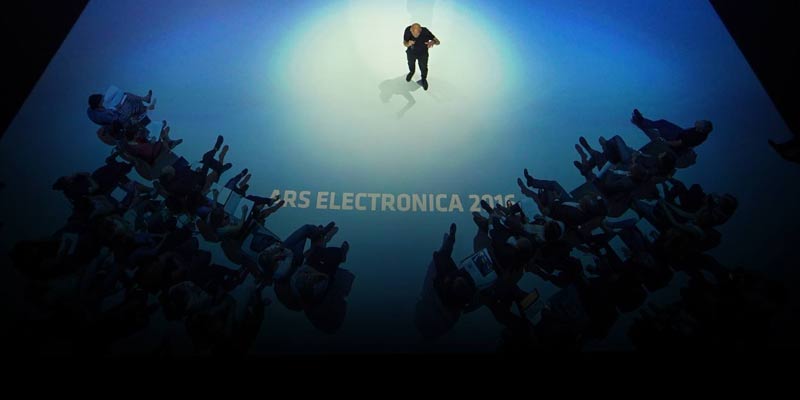Ars Electronica Futurelab’s new art installation at Vienna International Airport
“ZeitRaum” at Vienna International Airport’s New Terminal
(Linz / Vienna, June 6, 2012) “ZeitRaum” (TimeSpace) is an interactive art installation the Ars Electronica Futurelab designed for the new terminal at Vienna International Airport. It creates real-time interpretations of arriving and departing flights. “ZeitRaum” consists of a series of stations that accompany departing passengers on their way to their gates. The airport authority will also be using the installation for half of the available time as an ad medium.
ZeitRaum
At the core of this work is an imaginary space, one at the interface of all the world’s airports. Passengers enter it when they pass through a security checkpoint prior to takeoff, and leave it after touching down at their final destination. This space’s boundaries are constantly shifting in accordance with current air traffic. Within its confines, cultures, languages and nations segue into one another like adjacent time zones. This space hosts more than five billion people a year, men and women who are total strangers and yet feel that they’re temporarily interconnected as fellow members of a transient community. This space has had no name until now. The Ars Electronica Futurelab calls it ZeitRaum.
Media Art in Vienna International Airport’s New Terminal
Travelers’ initial encounter with ZeitRaum is in the Check In 3 area, where an imposing wall of monitor screens straddles the corridors leading to and through the security checkpoint. A person’s approach triggers a cloud of letters cascading down this wall. Once they come to rest at the bottom, these letters coalesce into texts that, in turn, form the topography of a landscape. Hills and valleys take shape in this way, all of them incessantly in motion because their growth is a function of current arrivals and departures. Every takeoff engenders a hill, every landing a valley.
More artworks accompany passengers as they make their way along the concourse to the gates. “Industrious Clock” is a digital chronograph by Yugo Nakamura (JP). Like a conventional timepiece, its numbers change by the second, minute and hour, but in this case they’re drawn by hand, erased, redrawn and erased once again. In what might be called a handbook of temporal display, standardized, objectified timekeeping is juxtaposed to so-called felt time. “Last Clock” by Jussi Ängeslevä (FI) and Ross Cooper (UK) arranges footage shot live at Vienna International Airport into three concentric rings–the innermost updated hourly, the middle one by the minute, and the outer one second by second. “AIRPORT SOUNDSCAPES #1” is what Austrian composer Rupert Huber calls a “data-sonification.” Navigation information and commands issued by VIE’s air traffic controllers trigger sound sequences that make the latest arrivals and departures audible to those waiting in the facility’s passenger lounges.
The Ars Electronica Futurelab
The Ars Electronica Futurelab is one of the four divisions of Ars Electronica Linz GmbH. The media art laboratory’s staff includes experts in a wide array of fields. Its style of work is characterized above all by an interdisciplinary approach and international networking. The Futurelab’s broad spectrum of activities includes conceiving and executing exhibition projects, developing artistic installations, and conducting R&D joint ventures with partners in academia and the private sector. The Ars Electronica Futurelab was founded in 1996.
pdf “ZeitRaum at Vienna International Airport’s New Terminal”
http://www.flickr.com/photos/arselectronica/8185329935/
ZeitRaum / Otto Saxinger / Printversion / Album
httpv://www.youtube.com/watch?v=5RNHEUJzVzU&feature=plcp

